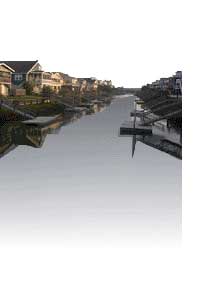|
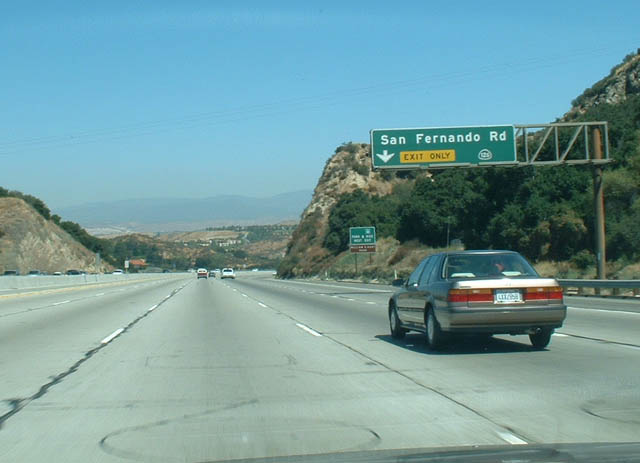
SUBURBIA EXPLOSION & THE VALLEY’S CAR CULTURE
After the war the Valley became the nation's fastest growing region. Magazines and radio
programs hyped it as the place to be, although the Atlantic Monthly scoffed that "every piece of land that nourishes four
walnut trees is called a ranch" by shameless land brokers. Real estate became the business to be in. The population doubled
by 1950, and again by 1960. Tract after tract of mostly uninspired homes rose quickly across the plain of the Valley, racing
outward faster than the streets and sewers and fire stations could keep up.
Along the way, a new American lifestyle took hold. Families lived in their backyards and
drove everywhere except into Los Angeles, where the Valley suburbanites rarely ventured. The San Fernando Valley became the
nation's leading symbol of suburbia, as well as the swimming pool and sports car capital of the country and, eventually, the
home of the minimall. Vestiges of the ranching culture began to be squeezed into smaller corners of the Valley, as suburban
homeowners objected to tractor dust and waking to the crowing of roosters.
Car culture
With its spread out spaces and lack of other transit options, the Valley grew up with
the automobile. Everyone drove to work and to shop, creating extended traffic jams on streets that often began as dirt farm
lanes. At one time, eight drive-in theaters ran shows nightly at dusk. They were the Pickwick, Victory, San Val and Laurel
in the East Valley, the Sepulveda, Van Nuys, Reseda and Canoga in the west. Even churches met in the drive-ins.
Youth culture was especially tied to cars. The center of it all was the southern
end of Van Nuys Boulevard. There, hundreds of cruisers gathered to show off their customized wheels and to hang out. On Club
Night, every Wednesday, it could take an hour to drive a few miles through Van Nuys and Sherman Oaks. Community backlash and
a police crackdown in the 1980s ended the tradition that dated to the 1930s. "If it was not for that lighted stretch of concrete
in the San Fernando Valley, I would not be married to the lovely lady sitting next to me," a letter to the editor mourned
in the L.A. Times.
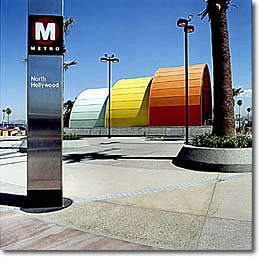
Despite
the dominance of the automobile, the Valley has two Metro subway stations, in Universal City and North Hollywood,
which opened in 2000 as an extension of the Metro Red Line Subway connecting the Valley to Hollywood and downtown Los
Angeles.
(Photo shows the NoHo subway station
which is the end of the Metro's red line)
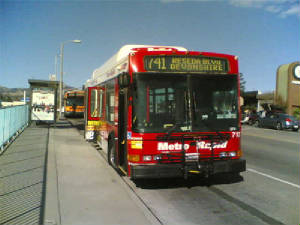
|
| Two Metrolink commuter rail lines connect the Valley to downtown Los Angeles. |
|
 |
|
|
|
 |
|
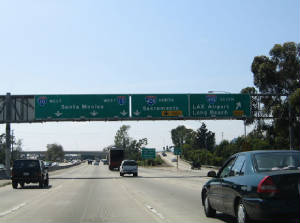
Although the Valley is part of Los Angeles, its development pattern is almost
exclusively suburban, and the automobile is the dominant mode of transportation. Several freeways criss-cross the Valley,
most notably, Interstate-405, U.S. 101, California State Route 118, and Interstate 5. Most of the major thoroughfares
run on a cartographic grid; notable streets include Sepulveda Boulevard, Ventura Boulevard, Laurel Canyon Boulevard, San Fernando Road, Mulholland Drive, and Topanga Canyon Blvd California State Route 27.
Despite the dominance of the automobile, the Valley has two Metro
subway stations, in Universal City and North Hollywood, which opened in 2000 as an extension of the Metro Red Line
Subway connecting the Valley to Hollywood and downtown Los Angeles. The Orange Line, an east-west Bus Rapid Transit bus-way
was opened in October 2005, connecting the North Hollywood Metro station to Warner Center in the west Valley. The new
line features "train-like" articulated buses and very high frequency of service. Long-promised daily bus service between Sylmar
and Santa Clarita began operating in 2006.
Two Metrolink commuter rail lines connect the Valley to downtown Los Angeles, merging into one at Burbank. These operate on
a limited schedule serving commuters only during regular work hours. Amtrak's Pacific Surfliner has stations at Burbank Airport, Van Nuys and Chatsworth. Four Metro Rapid bus rapid transit lines (the 734, the 761, the
780, and the 750) service the area with more planned. Metro service is planned and operated by the San Fernando Valley Sector
under policies and oversight of its Governance Council.
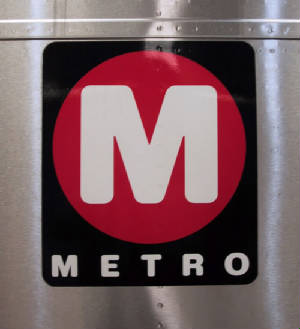
|
 |
|
|
|
